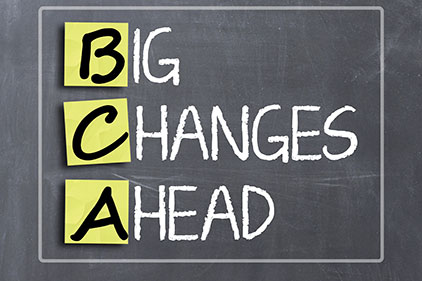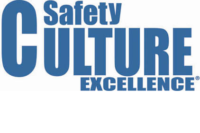In August 2014, McKinsey & Company published their survey1, by the same title, wherein the authors surveyed over 2,200 global executives to discover the answer to the question, “How important is the way you implement a major change effort?” (www.mckinsey.com/insights/operations/Why_implementation_matters?cid=other-eml-alt-mip-mck-oth-1408)
Even though the survey was primarily focused on major business change efforts, the survey findings can certainly be applied to major safety change efforts.
The McKinsey surveyors confirmed the seven core capabilities necessary for implementing a major change effort that McKinsey uses in their Implementation Capability Assessment.
The seven core capabilities with a safety slant are:
Ownership and commitment to change
McKinsey’s first core capability is clear, organization-wide ownership and commitment to change across all levels of the organization. To accomplish organization-wide safety change, it is critical to have everyone own and be committed to the safety change at all levels of the organization. We all know what we expect of leaders, but do we ever counsel them on what needs to be done on their part to affect the change? Too often leaders merely go through the motions. Sure they talk the talk, but they don’t walk the walk.
Safety professionals need to look for opportunities to make safety change suggestions to senior leadership. If you use a “Safety Moment” process before every gathering of employees, consider making it more formal. For example, consider the Safety Moments and Life Rules that Halliburton has posted here: http://www.halliburton.com/en-US/about-us/hse-service-quality/hse-safety-moments.page. Rather than having leadership always asking the group for a safety topic to share, give leadership suggestions of safety moments they can share.
I recall a director of operations at DuPont who would ask the following question before starting a meeting at one of our plant sites, “Who do you think is going to be the next person injured at the plant?” After a brief “deer in the headlights moment” invariably someone would speak up and name an employee. Interestingly, almost always everyone in the room would agree. The director would then ask the plant manager to introduce him to the named individual. After being introduced, the director would tell the employee how much he valued him as an employee and did not want to see him become injured even though the plant leadership thought he might be the next one to get hurt. He would ask the employee, “What can I do to prevent you from getting hurt?” Often this would lead to some very informative exchanges not only for the director, but the plant manager also.
Prioritizing and planning
The second core capability is ability to focus the organization on a prioritized set of changes. This is the core capability where safety professionals can provide the necessary prioritized changes that need to be made. The key is to know the organization well enough to know the changes it can tolerate and the timing for introduction, recognizing that undertaking a major safety change effort is a journey not a destination. Don’t let your leadership hide behind some vague notion, such as desiring to change the safety culture and achieve zero injuries. Force the prioritized set of changes to be specific, meaningful, and purposeful. For example, national trends indicate there is an apparent increase in the severity of injuries while injury rates and fatalities seem to have plateaued over the past decade. This trend is beginning to lead companies and associations to focus on Low Frequency, High Impact Incidents.
Accountability
The third McKinsey core capability is clear accountability for specific actions during implementation. Obviously, accountability is driven from the top, but management can use some help from you. Using the prioritized set of safety changes, develop an estimate of when each change needs to be initiated with milestones indicating that progress is being made toward achieving the desired change. Establish goals along the journey that reveal that change is actually taking place. Work with management and those assigned to lead the changes with the objective of gaining agreement, ownership, and commitment from each to devote the time and resources to affect the changes. With this in place, management has the necessary information to track progress, ensure accountability, and intervene, if warranted.
Program management
The fourth core capability is effective program management and use of standard change processes. There are an endless number of program management and change processes that can be employed to affect a major safety change. As a safety professional, learn the change process your organization relies upon to affect change. Spend quality time understanding where in the change process safety and you fit in and work with whomever is facilitating the change process to assist in integrating safety into the normal flow of business and operations. Avoid the temptation to affect a safety change independent of the business processes of the organization. For too long, safety professionals have held safety out as being something that is separate from business. To sustain a safety change, think integration.
Long-term sustainability of changes
The fifth McKinsey core capability is planning from day 1 for the long-term sustainability of changes. From a systems thinking perspective, it is impossible to make a change in an organization and not experience the subsequent changes that occur from the original change. In order to plan for the long-term sustainable changes, first figure out what are the changes the organization wants to sustain. Always be cognizant as the organization undergoes its changes. Unexpected opportunities will likely surface that the organization would also want to sustain.
Continuous improvement
The sixth core capability is continuous improvement during implementation and rapid action to devise alternative plans, if needed. Continuous improvement and implementation traditionally go hand-in-hand; however, rarely does any major change effort, especially a safety change effort, go as planned. In fact, if the change effort does go as planned, the planners in all likelihood missed something in their original planning phase. As the safety change implementation unfolds, you need to be paying close attention to those actions that are not producing the results expected and be ready to quickly devise alternative plans to realign the effort. It is important to be agile in any safety change effort.
Resources and capabilities
The last McKinsey core capability is sufficient resources and capabilities to execute changes. With the advent of injuries becoming less frequent, but more severe, management is recognizing that to affect a major safety change requires resources and capabilities. Consequently, safety professionals need to understand budgeting and financial management in order to make a case for a major safety change effort. Connect the economic value-add of the effort to the improvement in the overall safety performance and you will have a winning effort.
Although the McKinsey surveyors were not specifically directing their survey to safety change efforts, it is safe to say the confirmation of the McKinsey seven core capabilities for implementing a major organizational change directly apply to undertaking a major safety change in an organization.
Closing thoughts
Safety programs need to break out of the 1980s mindset and stop being the de facto compliance officer serving as an internal extension of OSHA. We have had over four decades of this mindset; it is time to start thinking about what we can do to improve the competitiveness of the organizations for which we are employed. Inevitably, this will require safety professionals to learn new skills, both professionally and interpersonally.
Through this survey, the McKinsey surveyors, possibly unknowingly, have provided safety professionals in for-profit and nonprofit organizations a roadmap to successfully undertake major safety change efforts with an empirical basis for success. The challenge is whether safety professionals are up for the task of change or comfortable with sitting at their desks and telling operations when they have done something wrong.
1 Pustkowski, R., J. Scott, and J. Tesvic. August 2014. Why implementation matters. McKinsey & Company, Sydney, Australia.


